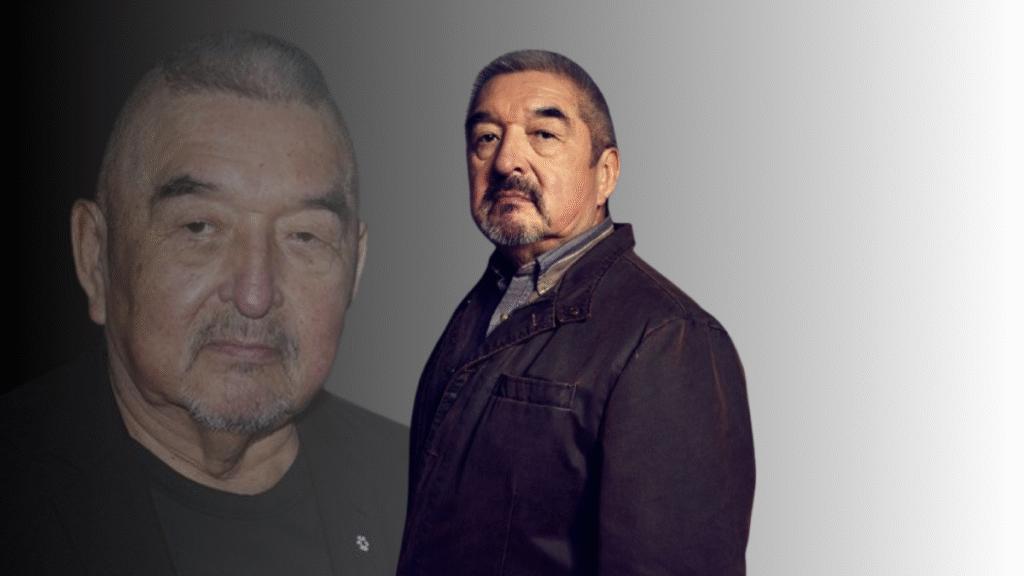
Renowned for his compelling portrayals of Indigenous characters, celebrated Canadian actor Graham Greene has passed away in Stratford, Ontario at the age of 73. His death was confirmed by his Canadian agent, Gerry Jordan, who mourned the loss of an artist whose work left an indelible mark on the screens of Hollywood and Indigenous peoples.
Greene’s legacy extends far beyond his impressive filmography;
he was a proud member of the Oneida First Nation and dedicated much of his life to showcasing Indigenous stories and perspectives through his art. Born on June 22, 1952, on the Oneida Reserve in southwestern Ontario, Graham Greene’s journey into the acting world was inspired by a deep connection to his heritage and a desire to tell stories connected to his community.
Thank you for reading this post, don't forget to subscribe!Before entering the world of cinema, Greene worked in traditional trades such as welding and carpentry, skills that introduced him to the practical realities of life before he made his mark on the stage and screen. His education at Toronto’s Centre for Indigenous Theatre, from which he graduated in 1974, provided him with the foundational training that helped hone his talent and commitment to authentic storytelling.
Green’s breakout role came with his memorable performance as a shaman in the 1990 film “Dances with Wolves.” The role earned him an Academy Award nomination for Best Supporting Actor, a recognition that underscored his ability to bring depth and dignity to Indigenous characters often marginalized in mainstream Hollywood narratives.
The film was a critical and commercial success, winning seven Oscars, including Best Picture and Best Director. Green’s on-screen presence contributed significantly to the film’s powerful portrayal of Indigenous culture and history, and his role became a defining moment in his career. Despite his international fame, Green chose to remain in Canada and not move to Hollywood or New York, a testament to his pride in his heritage and community.
During his nearly five-decade career.
Green appeared in numerous Hollywood blockbusters that reflected his versatility and commitment to authentically representing Native peoples. Notable among these include the 1994 film “Maverick,” in which he portrayed a Native man with nuance and authenticity; 1995’s “Die Hard with a Vengeance
” which demonstrated his ability to adapt to intense action roles; and 1999’s Oscar-nominated.
“The Green Mile,” in which he played Arlen Bitterbuck, a Native American death row inmate. His performances often went beyond stereotypes, giving audiences a glimpse into Native life and history that is rarely depicted in mainstream cinema. Throughout his illustrious career, Green remained dedicated to his roots and to amplifying Native voices through his work. His contributions to film and Native representation have left an indelible legacy that has inspired generations of actors and storytellers. Greene’s passing marks the end of an era, but his influence lives on, reminding us of the importance of authentic storytelling and cultural pride.
Farewell to a pioneer:
Remembering Graham Greene With the passing of renowned Canadian First Nations actor Graham Greene at the age of 73, the world has lost a profound talent and a dedicated advocate of Indigenous stories. His family and representatives confirmed that Greene died after a long illness, leaving behind a legacy of decades of groundbreaking performances and unwavering cultural pride.
Born in Ohsweken, Ontario, in 1952, Graham Greene’s artistic journey began amid the rich traditions of his First Nations community. From an early age, he showed a passion for storytelling and performance, which eventually led him to Canada’s prestigious Stratford Festival in the 1970s. There, Greene honed his craft on stage and captivated audiences with his depth and authenticity.
His involvement with Native Earth Performing Arts, an Indigenous theatre company dedicated to promoting Indigenous voices, further solidified his commitment to elevating Native stories and perspectives through performance. In the late 1970s, Green expanded his reach into television and made his stage debut in 1979.
By 1983, he appeared in his first film “Running Brave,”
where he played Olympic athlete Billy Mills—a role that highlighted his versatility and drew attention from both critics and audiences. However, it was his compelling performance as Kicking Bird in the 1990 film “Dances with Wolves” that further solidified his international reputation. The role earned Green an Academy Award nomination for Best Supporting Actor, a milestone that recognized his talent and the importance of Indigenous representation in Hollywood.
Throughout his career, Green remained committed to portraying Indigenous characters with nuance and dignity. His filmography includes notable films such as “Die Hard with a Vengeance” and “The Green Mile,” where his performance lent depth and authenticity.
In addition to his work in film and television, Greene was vocal advocate for Indigenous storytelling and often spoke about the lack of early platforms for Indigenous artists and writers. He expressed pride in seeing the current growing number of Indigenous writers, actors and filmmakers who are making significant contributions to the arts and paving the way for generations to come.
Graham Greene’s passing is the end of an era, but it is also a reminder of his invaluable contributions to both the arts and Indigenous advocacy. His legacy inspires countless artists and storytellers who want to honor their heritage and share their voices with the world. In remembering Greene, we celebrate not only his extraordinary talent, but also his unwavering dedication to elevating Indigenous narratives to the global stage.